Log in or create new account to save this product to your wishlist.
How to get rid of dandelions in your lawn
Dandelions are pretty, but they can be unsightly if they spread too far across your lawn. Find out how to prevent them the safe way.
Latest articles
7 MIN 22 Jul How to keep your lawn in shape this summer 9 MIN 15 Jul Watering Your Garden: 10 Top Tips! 11 MIN 15 Jul Is Your Grass Type Right for your Garden? 11 MIN 10 Sep Create Your Low-Maintenance Garden – Tips and Ideas 11 MIN 08 Sep The Ultimate Guide to Choosing the Perfect Hedges for Your Garden 12 MIN 30 Aug The Top 20 Evergreen Climbers to Transform Your GardenDandelions are those jolly, yellow-tipped flowers that sprout commonly from UK lawns, paths, and in the wild. And while they’re widely considered a weed, dandelions in your lawn could actually benefit your turf.
- What are dandelions?
- Dandelions aren’t always bad for your lawn
- Are dandelions edible?
- Dandelions are valuable pollinators
- How to recognise a dandelion?
- Where do dandelions come from?
- How to get rid of dandelions in your lawn
- How to prevent dandelions in your lawn
- FAQ
However, not everyone wants dandelions popping up on their lawn, and getting rid of them is easier said than done. But don’t immediately reach for the weed killer – there are ways of dealing with the problem without spraying chemicals.
And that’s what this article is about: how to get rid of dandelions in your lawn. But I’m also going to cover a range of interesting facts about these jolly little flowers that could benefit your health (and your turf).
Ready? Let’s go!
What are dandelions?

Most of us know what a dandelion looks like, but do we know what a dandelion IS? While we commonly refer to dandelions as intrusive weeds, they’re actually an edible broadleaf perennial herb. And they’re found in around 60 countries across the globe.
Historically, dandelions were exploited for their medicinal properties (yes, common-or-garden dandelions that grow in your garden could be good for you!). The entire plant offers a range of health benefits, from aiding digestion to improving and strengthening your immune system. 00
The leaves help stimulate appetite while boosting digestion and helping kidney function, and the flower offers antioxidant properties. The plant’s root helps detoxify the gallbladder and the liver.
However, go to a registered herbalist before you rush out and eat mouthfuls of these valuable plants because over-consumption can cause an allergic reaction in some people, as well as digestive issues such as diarrhoea, heartburn or stomach discomfort in others.
Dandelions aren’t always bad for your lawn
Dandelions can bring benefits to your garden soil.
The taproot (more about this later) helps bring nutrients to the soil surface. This increases the soil’s nitrogen levels, which helps turn your grass green.
Their root systems can be fairly extensive – up to 1m in length – helping aerate and loosen compacted soil. This ensures that air, nutrients and water penetrate the soil more deeply.
Finally, dandelion roots hold your garden earth in position, minimising soil erosion.
However:
While offering benefits, too many dandelions in your lawn will steal the water and nutrients your lawn needs to thrive. So, finding a sustainable balance is the key here.
Are dandelions edible?

I’ve mentioned that dandelions have medicinal properties, but they’re also a popular food source, having low toxicity levels.
Winemakers ferment the flowers for wine, while the upper plant can be consumed raw or cooked, serving up a healthy vitamin boost (A, B, C, E, and K).
But the nutritional good news goes on: dandelions contain folate, calcium, potassium, and magnesium. They’re also a rich source of polyphenolic compounds and beta-carotene, which provide antioxidants that help attack free radicals that cause cancer and other illnesses.
However:
If you intend to eat dandelions, check first with your doctor to ensure they won’t interfere with other medications. And never ingest dandelions that have been subjected to weed killers.
Dandelions are valuable pollinators
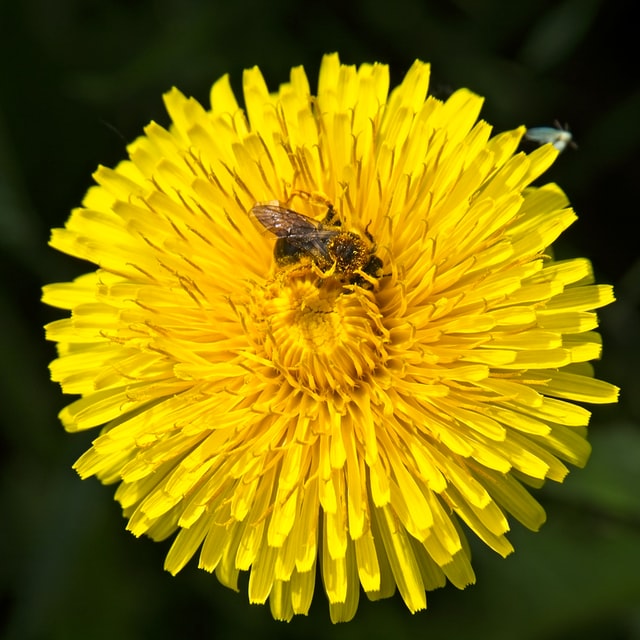
We pay a high cost for living in towns and cities in the UK, which is the loss of our valuable green spaces. And as we live in more and more artificial environments, our wildlife suffers. And, of course, when nature suffers, we all suffer because we’re all part of the food chain.
As a result, initiatives such as No Mow May ask us to minimise mowing in the spring to help the wildlife populations – and our lawns provide valuable habitats for insects and rodents and food for pollinators such as bees.
And dandelions are good for the bees, which – without our help – have the potential to disappear altogether. And a world without bees is effectively a world without food.
So, dandelions in your lawn might look a little unsightly, but unless the problem is out of hand, it’s worth letting a few survive to help our wildlife thrive.
How to recognise a dandelion?
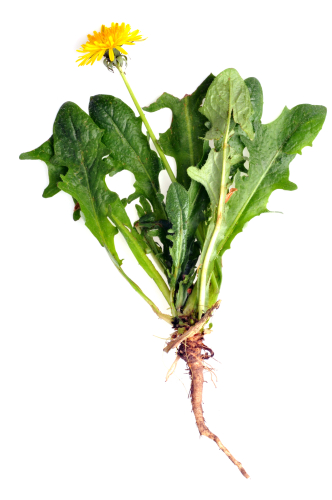
Most of us recognise the upper surface plant:
- a stalk that releases a milky latex when it’s damaged
- a rosette of soft leaves – mid-to-dark green
- a distinctive yellow flowerhead
- deep tap roots
The tap root is difficult to remove and kill completely. After all, one of the main problems gardeners experience when faced with a field full of dandelions is their hardiness.
You can remove dandelions by digging them up, but their roots are super-robust, and the plant can return from a tiny remnant that gets left in the soil. We’ll deal with more permanent removal later.
Where do dandelions come from?

A dandelion’s flowering period is relatively short – they can go from flower to ripe seed within 12 days. They fruit between April and June; each flower head producing as many as 400 seeds – mostly averaging at around 180, while an entire plant can produce around 2000 seeds.
Once the dandelion flower has been pollinated, it loses its petals, and the head of the flower slowly transforms into a “clock” – a seedhead composed of long-stalked seeds that release into the air when ready.
When the seeds mature, the plant releases the seedhead into the air, dispersing them up to 500m away from the parent plant. And once they’ve landed, the seed can germinate immediately, at a 90% germination rate (approximately).
The seeds are incredibly robust, surviving freezing temperatures and living as long as five years underground before they finally germinate. As well as air distribution, you can find viable seeds in animal droppings, including birds.
So, this extreme fertility can be problematic for gardeners trying to rid themselves of the dandelions on their lawn because they WILL keep coming back.
How to get rid of dandelions in your lawn
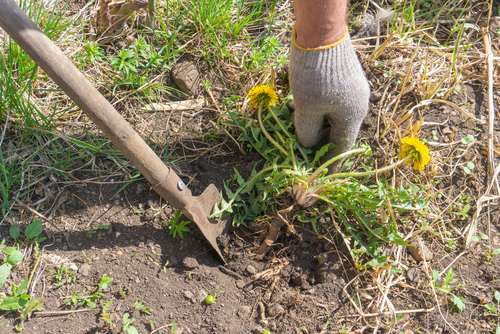
These fertile flowering plants are challenging to control once they have set in, so mowing is often the best defence to prevent further spread.
Mow when the plants are in flower (and before they have gone to seed). This will interrupt the lifecycle but won’t kill the plant.
The plant develops deep taproots that are challenging to extract manually, although a “dandelion grabber” tool can potentially remove the whole root. You must remove the entire root – even a tiny fragment can sprout and produce a new cluster of shoots.
We recommend these two approaches – mowing and digging the roots – to prevent spread, but there are other ways to kill dandelions in your lawn.
Dig out your dandelions by hand
Although hand digging is time-consuming, it can produce excellent results. It’s best to dig them out in the spring when the first seedlings appear – that way, the roots are likely to be more shallow.
Be careful to remove the entire taproot and re-dig if new shoots appear nearby, which could be offshoots of the original plants.
How to remove dandelions with a herbicide
Chemical control should be a final resort because it can damage your soil. If you’re hoping to kill the dandelions in your lawn, use a selective broadleaf herbicide – this will ensure you don’t kill your grass! Spray it directly onto the leaves, following the instructions on the bottle or packet – especially regarding pet and child safety.
Herbicides work best before the plant has flowered, after which it develops a stronger resistance to chemical killers.
You’ll need 1-3 applications of your weed killer, which should contain:
- 2,4-D
- Dicamba, or
- Fluroxpyr
If the plants have already flowered, mow the lawn first and then spot apply the chemicals to the remainder of the plant. Respray any leaves that grow back within two weeks. You may need a third application in autumn if the leaves begin to grow back.
Don’t add grass clippings to your compost heap after applying weed killer – the chemicals remain in your lawn for up to 9 months.
However, continue to mow frequently to stop the remaining dandelions from flowering.
Remove your dandelions with a pre-emergent
You can prevent seed germination with a chemical known as a “pre-emergent”, which can be applied during the winter to stop seeds germinating in the spring.
This only works for seeds that haven’t already germinated, of course.
How to prevent dandelions in your lawn
As I’ve explained, preventing dandelions in your lawn can be extremely challenging because they’re so prevalent in the UK.
But your best line of defence is to avoid letting any dandelions from flowering:
- Mow your lawn regularly before the plant flowers
- Dig up the entire root, and
- Overseed your lawn to prevent other weeds from taking advantage of the bare soil.
FAQ
Dandelions are prolific plants that release seeds into the air. The seeds can spread by 500m and have a 90% germination rate. This means that it’s challenging to eradicate dandelions completely. Mow your lawn before the plants flower to prevent further spread.
Mowing your lawn before the dandelions flower interrupts the plant’s lifecycle, preventing it from turning to seed. Alternatively, dig up the roots but be careful to dig the entire root – the plant can grow back from a tiny root fragment. Of course, you can also apply a selective broadleaf herbicide, but this should be a last resort.
A taproot grows directly downwards into the earth and is very thick. The deeper it burrows, the more it tapers into a smaller diameter. New plants often grow as offshoots of a taproot, carrying underground nutrients to the surface.
Leave a comment
Your answer will be displayed on the site and the interested party will be notified by email.
Leave a comment
Have a question or want to share your experience? Leave us a comment.
Read more
The best tips and tricks for a lush green lawn
 Scarifying Kit
All products after scarifying | Quickly restores the lawn after scarifying | Outsmart weeds quickly with the use of this kit
From: € 39.99
Scarifying Kit
All products after scarifying | Quickly restores the lawn after scarifying | Outsmart weeds quickly with the use of this kit
From: € 39.99
 Spring Lawn Care Kit
MOOWY’s choice for the spring | Quick recovery of your lawn after winter | A strong lawn prevents weeds
From: € 25.99
Spring Lawn Care Kit
MOOWY’s choice for the spring | Quick recovery of your lawn after winter | A strong lawn prevents weeds
From: € 25.99
 Long Lasting Lawn Fertiliser
Effective for 90 days | See results in 14 days! | Suitable for all types of grass and soil
From: € 13.99
Long Lasting Lawn Fertiliser
Effective for 90 days | See results in 14 days! | Suitable for all types of grass and soil
From: € 13.99
Do you want a lawn calendar?
🌱 All important maintenance moments for your lawn during the year. Leave your email and we will send you the lawn calendar for free.
Enter your email
Receive the lawn calendar in the mail
Enjoy a green lawn all year round!




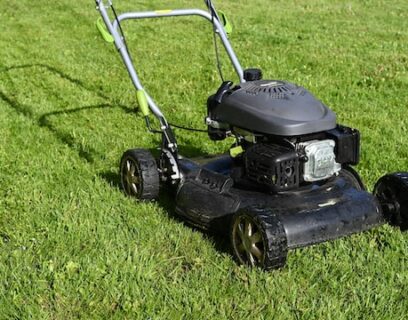

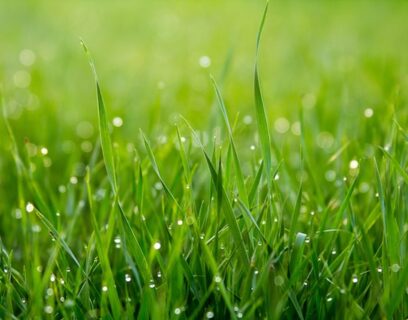





Comments (0)
There are no comments yet. Well then, what are you waiting for to
Be the first to write your comment!inaugurate this pretty page?
Do you have some comments?